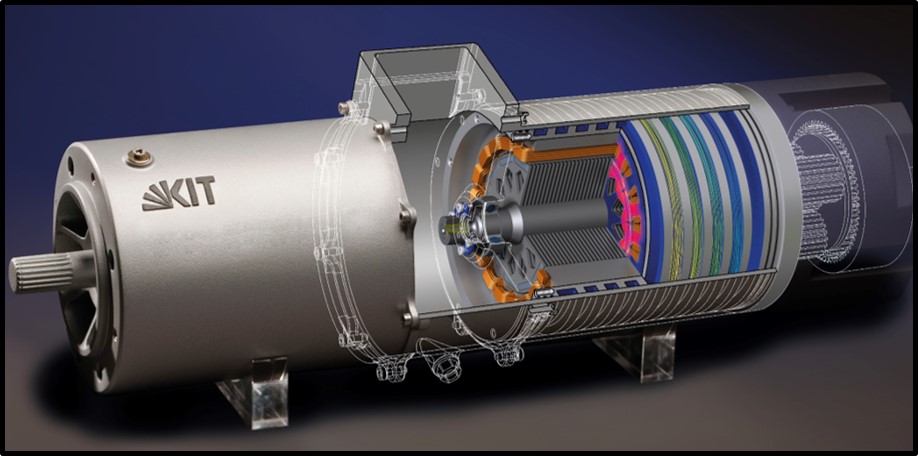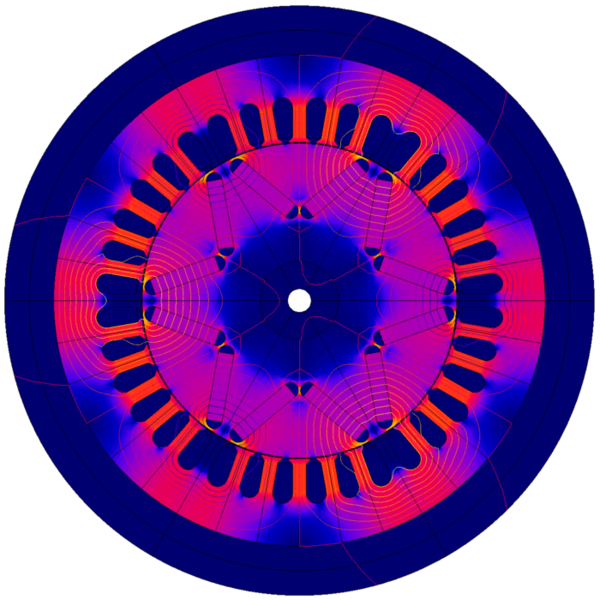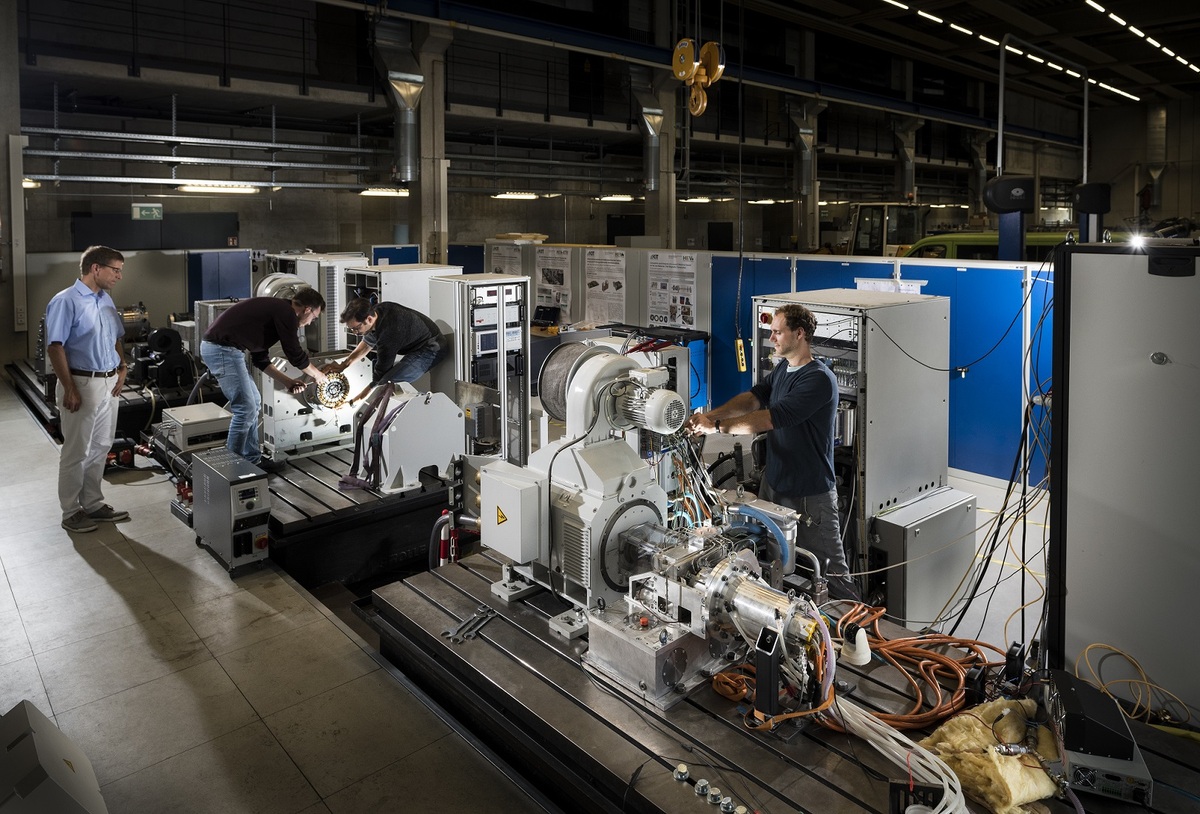Hybrid Electric Vehicles
Electric motors have been known for 150 years and in series production for industrial use for over 100 years. However, the requirements for motors and power electronics for the automotive industry differ significantly from those that must be met by an industrial drive. The optimised design of the electric drive train can therefore only be achieved in an interdisciplinary overall context.
For automotive applications, the focus has shifted strongly to the topic of power density, which is why the mechanical design plays an essential role. This can be achieved, among other things, through higher speeds, improved cooling and lightweight construction concepts. In addition, the use of new SMC materials, alternative rotor concepts with low moment of inertia and the integration of power electronics into the electric motor are also being investigated.
Due to the highly innovative nature of electric and hybrid vehicles, the question of the optimal drive topology for the respective application has not been definitively answered. Approaches to solving this problem lie in simulation-based optimisation. This requires the modelling of the entire drive train from the battery to the wheel.
Due to the coupling of known analytical calculation methods with FEM-supported tools, application-specific parameters and the motor geometry can be optimised within the electromagenic design. This methodology can improve the overall efficiency of the motor, but also its dynamic behaviour with regard to noise and vibration development.
Two test benches are available for the characterisation of prototypes and for the parameterisation and validation of simulations. With 145 kW and 215 kW, respectively, as well as speeds of up to 18,000 rpm and 15,000 rpm and torques of 270 Nm and 540 Nm, respectively, they cover the power range of hybrid and electric vehicles. In addition to investigating the dynamics of electric motors, analyses can be carried out based on real load scenarios.
More information about the competences and equipment of the ETI can be found here.




